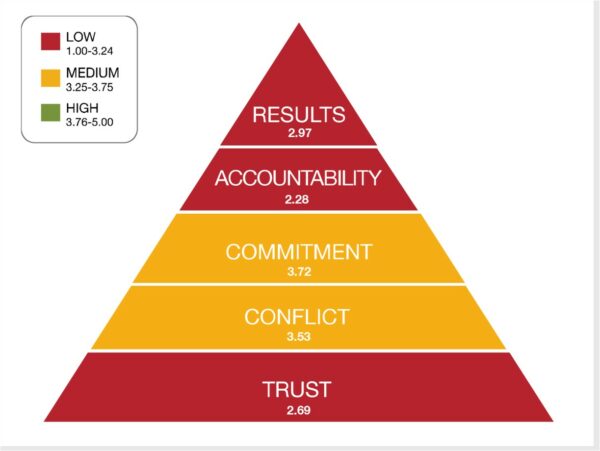5 BEHAVIOURS — High Performing Management Team
To Who
For leadership teams and work teams striving to become high-performing teams. The 5 Behaviors development process is based on Patrick Lencioni’s Five Behaviors model. This game-based development process provides a clear structure and practical tools for improving team performance on the journey toward becoming a high-performing team.
The Benefits of the Process
-
Gain a clear picture of the team’s current level of effectiveness
-
Identify behavioral patterns that hinder the group’s performance
-
Receive a clear roadmap and support for improving team dynamic
Group behavior is shaped by the patterns and habits that form within the team. According to Patrick Lencioni, the five levels of a high-performing team are:
-
Trust based vulnerability
-
Using conflict as a source of strength
-
Commitment through dialogue
-
Accountability among team members
-
Results orientation in all activities
A common barrier to high team performance is the group’s inability to fully utilize the perspectives of all its members. This leads to poorer decision-making, weaker commitment, reduced shared accountability—and ultimately, diminished results. Harmful behavior patterns can result in office politics, suboptimization, and wasted time.
Phases of the 5B Development Process
1. Insight
The team’s current state is examined through the lens of Patrick Lencioni’s model.
Wiley’s assessment provides data on the team’s current dynamics.
A shared understanding is built around the model, its benefits, the current and desired states, and the path for growth. Muutostaito’s coaching game is used to support this phase.
2. Growth
A change journey of 2–4 sessions is carried out toward the defined goal.
During the journey, the team improves its cohesion and ways of working. Example objectives include:
-
Dialogue is built on unconditional mutual trust
-
Differences of opinion are not swept under the rug; instead, everyone is expected to contribute their views, which drives commitment to the team
The results are measured through a follow-up Wiley assessment.


